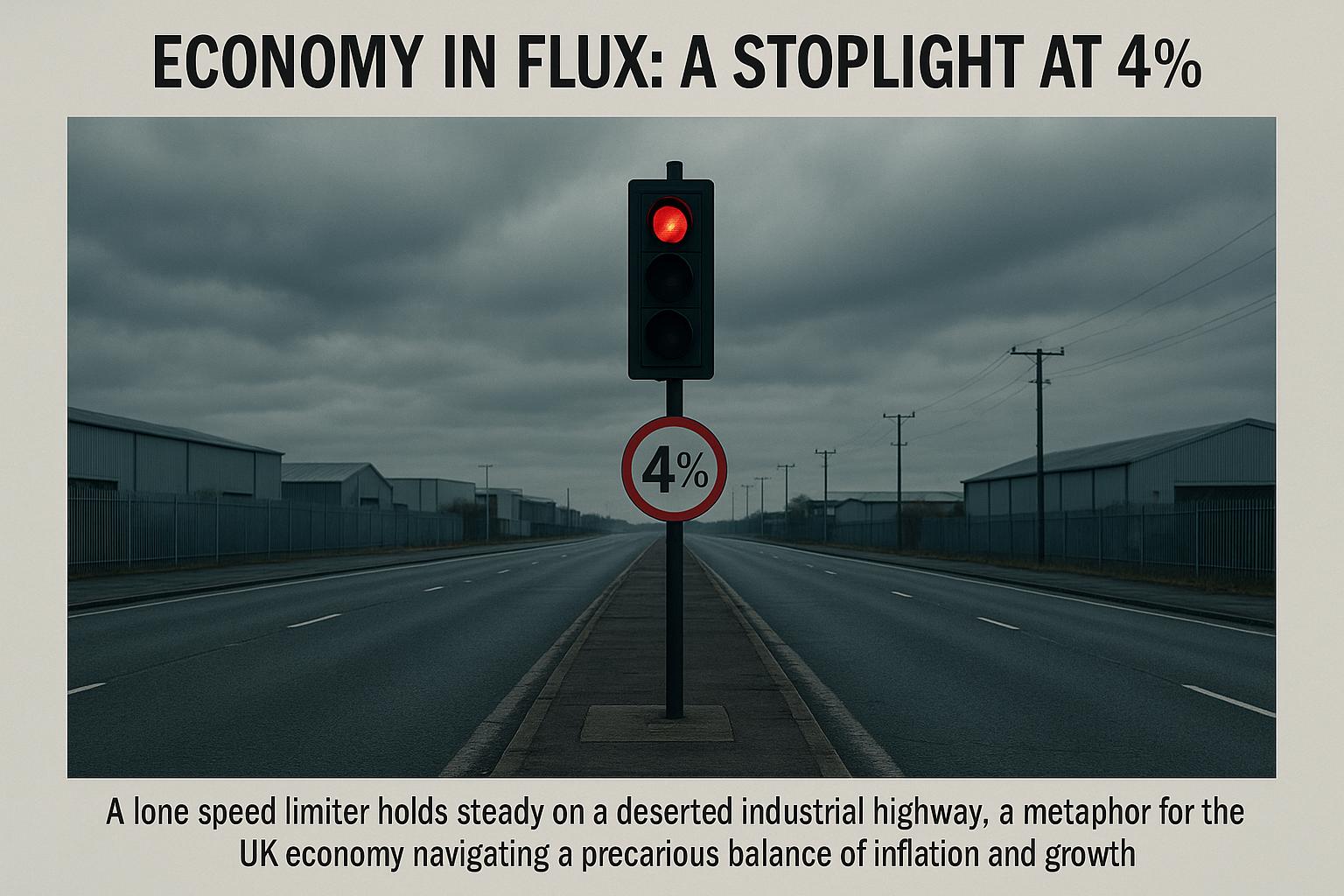Interest rates in the United Kingdom are widely expected to remain steady at 4% when the Bank of England's Monetary Policy Committee (MPC) delivers its decision on Thursday. This follows a cautious reduction from 4.25% to 4% in August, which lowered the rate to its lowest level in more than two years. The MPC’s previous cut was narrowly decided in a closely-watched vote, reflecting the delicate balance policymakers face in managing inflation and economic growth. The Bank rate is the primary tool used by the Bank of England to influence borrowing costs and control inflation, where higher rates typically reduce spending and slow price rises, though at the risk of harming the economy.
Inflation in the UK remains significantly above the Bank of England’s 2% target, with official data released on Wednesday showing the Consumer Prices Index (CPI) steady at 3.8% in August. This persistent inflation is largely driven by rising costs in food and drink, which saw prices increase by 5.1% year-on-year, as well as hospitality and petrol costs. Inflation in the UK is notably higher compared to other major economies, such as the U.S. at 2.9% and the eurozone at 2.1%. Analysts and economists suggest that this elevated and persistent inflation leaves little room for further interest rate cuts this year, with many anticipating that rates will remain on hold until at least early 2026.
The ongoing inflationary pressure is compounded by wage growth, which, despite slowing, remains elevated at around 4.8% for basic pay. This combination of high inflation and relatively strong wage increases complicates the Bank’s task of controlling price growth without triggering economic weakness. UK economic growth has been sluggish, expanding just 0.2% in the three months to July, indicating low momentum in the economy’s second half of 2025. Consumer concerns about living costs persist, with longer-term inflation expectations rising to their highest since 2019, indicating that inflation worries are becoming more entrenched in public sentiment.
The Bank of England is also expected to slow down its quantitative tightening (QT) programme amid rising volatility in bond markets. QT involves the sale of bonds previously purchased to tighten monetary policy, which has come under scrutiny for potentially driving borrowing costs higher. Forecasts suggest the pace of bond sales may be reduced from £100 billion annually to around £60-67.5 billion, with a focus on shorter-term government bonds. Unlike other central banks, the Bank of England has continued selling bonds rather than waiting for them to mature, making the pace of QT a key factor market participants are closely watching.
Mortgages and savings continue to reflect market uncertainty. Mortgage rates have shown a slight decline since the last MPC meeting, but future movements are highly uncertain. Rachel Springall from financial information service Moneyfacts notes that with inflation forecasts remaining above target and the forthcoming Budget adding further economic considerations, lenders and borrowers are likely to adopt a wait-and-see approach. Saver returns have, meanwhile, declined in tandem with falling Bank rates, with average easy-access savings rates dropping below 3%. This trend has prompted calls for savers to review their accounts to secure better returns amid the low-rate environment.
Looking ahead, while some economists foresee possible interest rate cuts in 2026, any such easing depends heavily on inflation falling closer to target levels and the economic outlook stabilising. The government’s upcoming November Budget will also play a crucial role, as Chancellor Rachel Reeves faces the challenge of reviving growth and managing public finances in the face of ongoing inflation pressures. Reeves has acknowledged the strain on households and indicated that the Budget will include tax increases alongside cost-of-living measures. Critics argue that prior tax hikes on businesses have contributed to inflationary pressures, adding another layer of complexity to the economic landscape.
In sum, the steady inflation figure, combined with sluggish growth and wage pressures, suggests the Bank of England will maintain its guard on interest rates for the foreseeable future. The central bank’s cautious stance aims to navigate the fine line between supporting the economy and dampening inflation, a balance that will define monetary policy decisions into 2026.
📌 Reference Map:
- Paragraph 1 – [1], [7]
- Paragraph 2 – [1], [2], [3], [5], [7]
- Paragraph 3 – [2], [3], [6]
- Paragraph 4 – [4]
- Paragraph 5 – [1], [7]
- Paragraph 6 – [6], [5], [4]
- Paragraph 7 – [1], [2], [3], [5], [6], [7]
Source: Noah Wire Services
